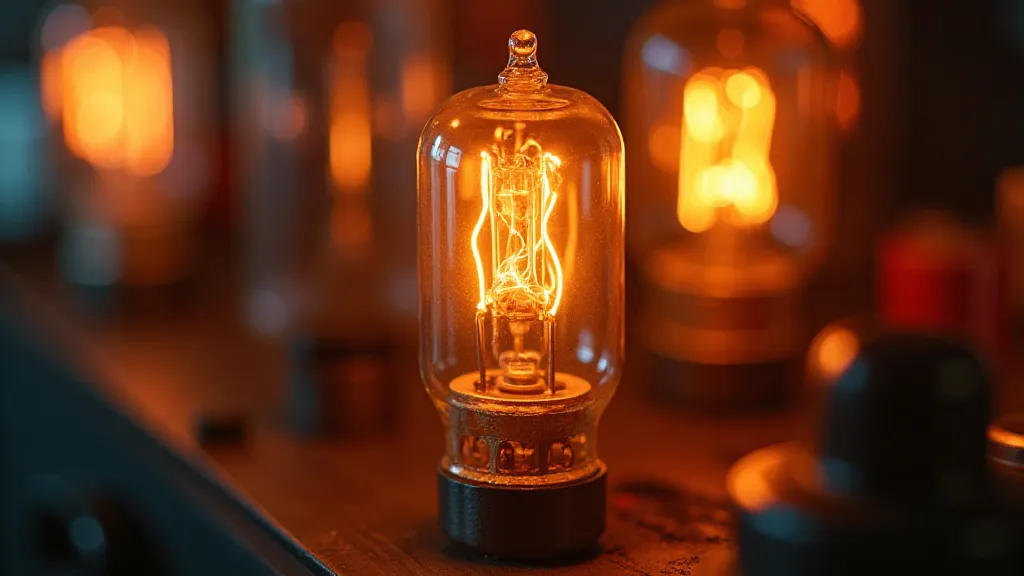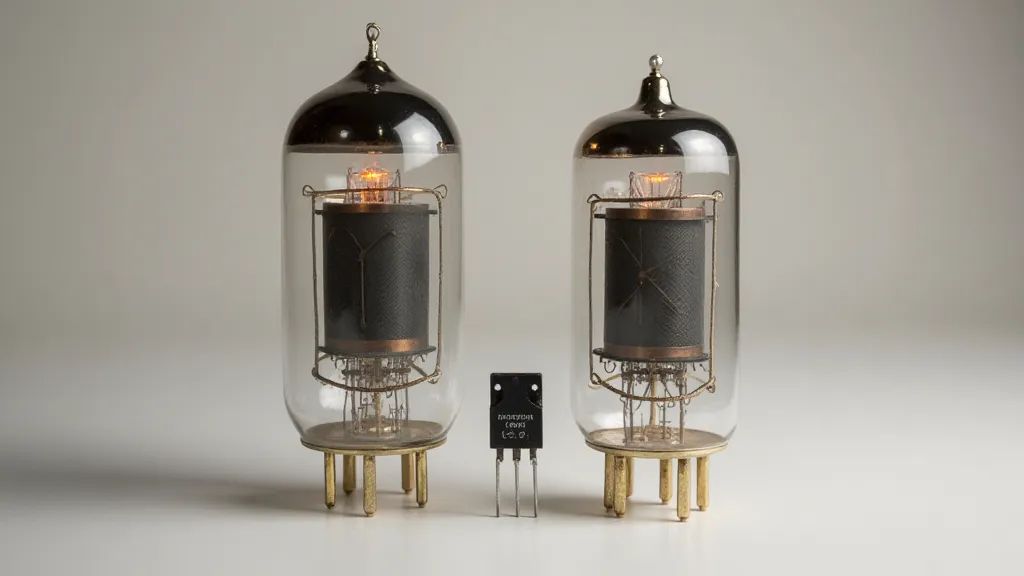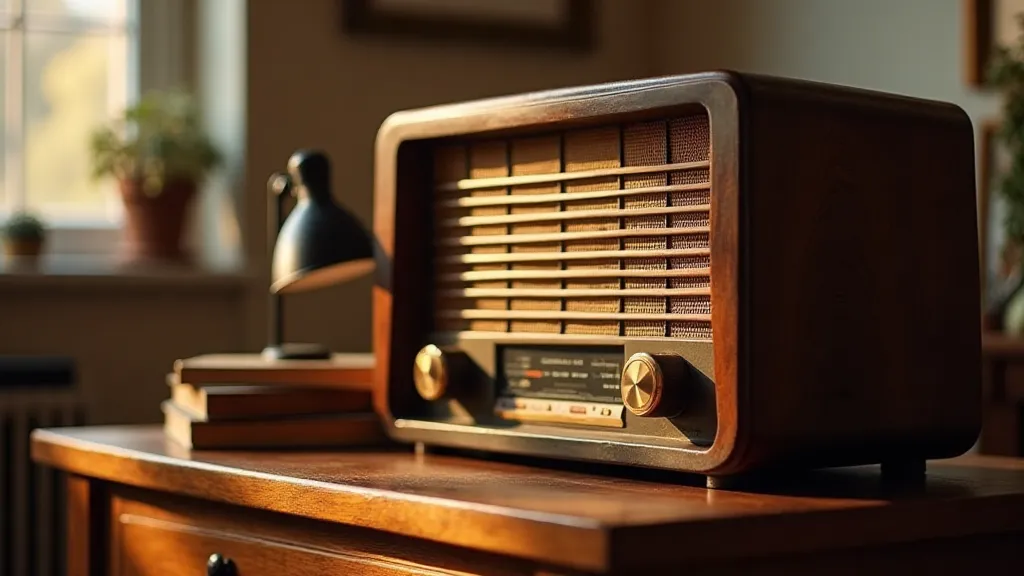From Valves to Transistors: Tracing the Technological Lineage of Radio
There's a certain magic in the hum of an antique radio. It’s not just the sound – often crackly, often faint, yet filled with a warmth that modern electronics lack – but the knowledge that you’re connecting with a different era. These aren’t just pieces of machinery; they’re vessels of history, testaments to ingenuity and craftsmanship, and gateways to a world where broadcast signals carried a palpable sense of wonder. But understanding that magic requires understanding the evolution of the technology within – a journey from shimmering valves to the compact power of transistors.
My own fascination began, as it often does, with a discovery. My grandfather, a man of quiet elegance and a tinkerer at heart, had a Zenith Stratosphere tucked away in his attic. It wasn't working, of course. Dusty, with a few cracks in the wood veneer, it seemed more like a forgotten relic than a working radio. But the sheer *presence* of it, the graceful curves and the promise of a bygone era, captivated me. He’s gone now, but every time I delve into the workings of an antique radio, I feel a connection to him, a shared appreciation for the beauty of engineered solutions.
The Dawn of Wireless: Valves and the Early Years
The story begins in the late 19th century, with pioneers like Guglielmo Marconi. His groundbreaking experiments in wireless telegraphy laid the foundation for radio broadcasting. But the critical element that allowed for amplification and the transmission of audible signals was the vacuum tube, often called a “valve” in British terminology. Imagine a glass bulb containing a heated filament, a grid, and an anode, all carefully arranged to control the flow of electrons. These early valves were behemoths, fragile, and power-hungry, but they allowed for the translation of faint radio signals into something that could be heard.

The 1920s and 1930s witnessed an explosion of radio ownership. Manufacturers like RCA, Philco, and Atwater Kent competed to produce increasingly sophisticated sets. Early models were often simple, requiring the user to manually adjust the antenna and volume. The craftsmanship, however, was remarkable. Cabinet makers painstakingly crafted housings from walnut and mahogany, creating beautiful pieces of furniture as well as functional radios. The intricate wiring and the careful placement of components demonstrated a level of attention to detail rarely seen in modern mass production.
The size and power consumption of valve-based radios meant they were large and cumbersome. Heat was a constant issue – those valves generated a *lot* of it. Reliability was also a challenge. Valves had a limited lifespan and were prone to failure. However, engineers constantly sought improvements, shrinking the size of valves, increasing their efficiency, and improving their reliability. The development of the superheterodyne receiver, a more sensitive and selective design, revolutionized radio performance.
The Rise of the Philco and Zenith Empires
The 1930s and 1940s were the golden age of the American radio manufacturer. Companies like Philco and Zenith became household names, their radios gracing living rooms across the country. These radios weren't just appliances; they were symbols of status and technological advancement. They represented the ability to access news, entertainment, and connection to a wider world. The designs became increasingly elaborate, incorporating features like tuning indicators, push-button tuning, and even art deco styling.
The wartime years brought changes. The focus shifted to military communications, and civilian radio production was curtailed. After the war, however, the radio industry roared back to life, with new technologies and designs emerging rapidly. The introduction of FM radio offered improved sound quality and reduced interference, although its adoption was initially slow.
The Transistor Revolution: A Paradigm Shift
The late 1940s and 1950s ushered in a transformative era: the transistor revolution. Invented at Bell Labs, the transistor, a semiconductor device, offered a remarkable alternative to the bulky and inefficient valve. Transistors were smaller, lighter, more durable, and consumed significantly less power. Suddenly, radios could be smaller, more portable, and more energy-efficient.

The transition wasn’t immediate. Early transistors were expensive and had limitations in performance. However, as manufacturing techniques improved and transistor technology advanced, they quickly became the dominant technology in radio design. The early 1960s saw a gradual shift from valve-based radios to transistor radios, and by the 1970s, valves were largely obsolete in consumer radio equipment.
The Legacy of the Valves: A Collector's Perspective
While transistors ultimately superseded valves, the legacy of valve-based radios remains strong, particularly among collectors and enthusiasts. The beauty of the craftsmanship, the warm sound, and the historical significance make these radios highly desirable. Restoring an antique valve radio is a rewarding experience, requiring patience, skill, and a deep understanding of electronics.
The skills required for restoring antique radios are becoming increasingly rare. Sourcing replacement parts can be challenging, requiring extensive searching through online forums, auctions, and specialized suppliers. The aroma of old resistors and capacitors when you open a radio is an experience that modern electronics simply cannot replicate. Even the challenges – the brittle wiring, the corroded contacts, the occasional blown fuse – contribute to the sense of connection with the past.
The shift to transistors not only changed the technology but also influenced the aesthetics of radio design. The elaborate cabinetry and handcrafted details of valve radios gave way to more minimalist and modern designs. While transistor radios offered numerous advantages, many collectors miss the elegance and character of the old valve sets.

The journey from valves to transistors represents a remarkable chapter in the history of technology. It’s a story of innovation, ingenuity, and the constant pursuit of improvement. And as I stand before my grandfather’s Zenith Stratosphere, carefully examining its valves and wiring, I’m reminded of the enduring legacy of these remarkable machines and the captivating story they tell.





